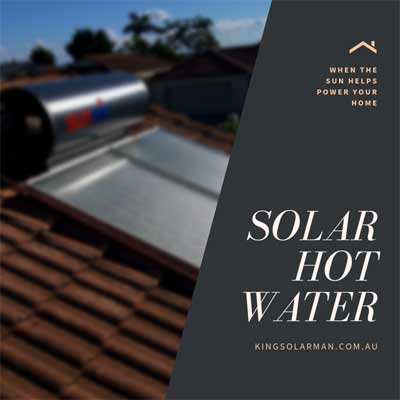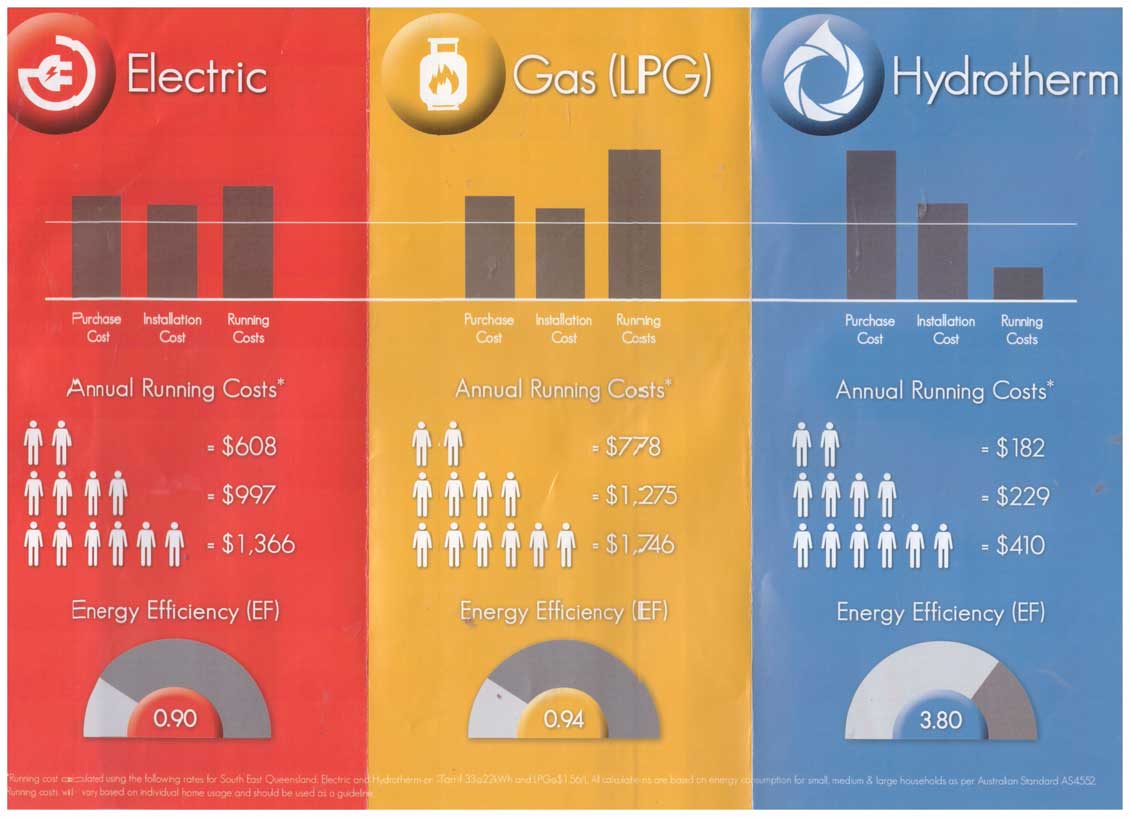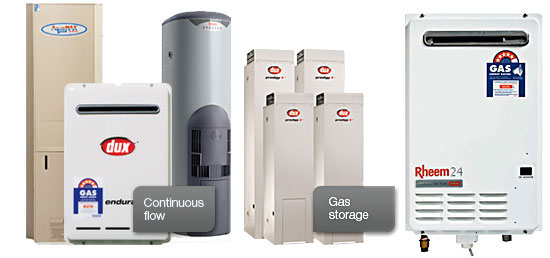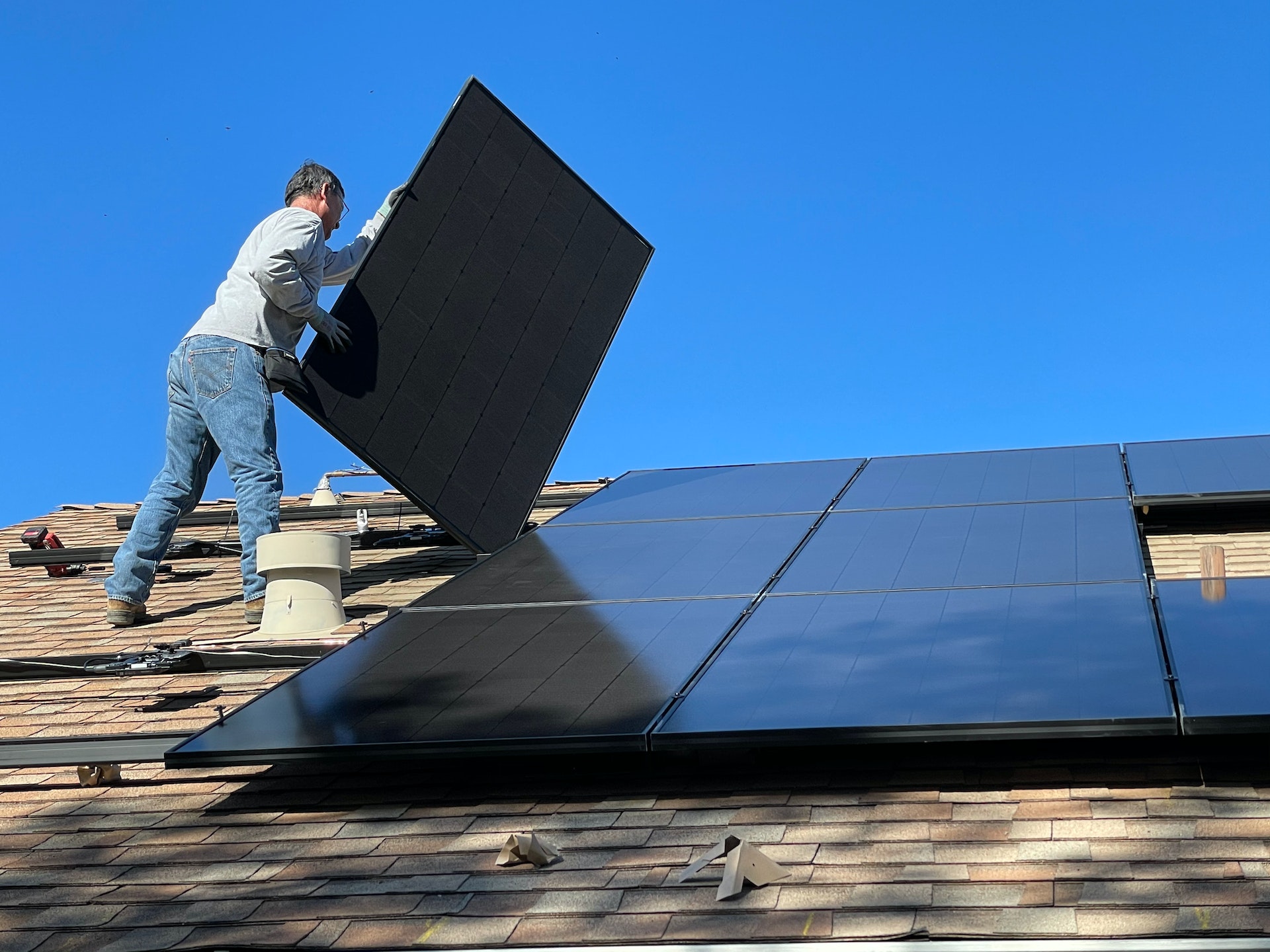Solar Hot Water Systems: A Buyers Guide
If your existing hot water system needs to be replaced, you may be wondering if a solar pump model might not be the better option for you. Is it really going to save you money in the long term, and is it going to be worth the initial investment? The quick answer is yes to both questions for the vast majority of homes.
Although the upfront investment for a solar hot water system that has been carefully selected may be higher, this type of system typically has much lower operating costs than traditional electric or gas heating methods. This is beneficial not only to the environment but also to your financial situation. In addition, the government might offer financial help in the form of deductions and incentives.
What is a solar hot water system?
A solar hot water system is made up of two main parts: solar collector panels and a storage tank. For a home with four people, you usually need a solar collector area of about four square metres (two panels) and a tank size of about 300–360 litres. In order to accommodate times when there is less sunlight or you need more hot water than normal, you will need a large tank.
Most thermosiphon systems have both the panels that collect heat and the tank that stores it on the roof. The thermosiphon effect—where water gets lighter and rises into the tank when it heats up—causes the liquid in the panels to move around in the tank.

Collector panels for pumped or split systems are placed atop the building, while the tank is situated on the ground below (or elsewhere in the building). The solar panels feed the tank with heated water using a pump.
If the panels aren’t put in the best spot, which is usually a part of the roof that faces north and isn’t in the shade, they might not work as well as they could. In this case, you will require a larger collector area.
Flat panels or evacuated tubes can be utilised as collectors. Evacuated tubes are generally more efficient and, as a result, require less panel area. However, the cost of utilising evacuated tubes is higher.
On cloudier days or on days with less direct sunlight, the water in the storage tank is typically heated by an electric or gas booster element.
In regions that are prone to frost, the water in the panels can freeze, causing damage to the panels. Because of this, you need frost-resistant panels, which heat the tank with a special heat-exchange fluid rather than heating the water directly.
Solar hot water systems can be relatively more expensive and time-consuming to install in comparison to conventional gas and electric hot water systems. However, a well-chosen system will pay for itself in the long run due to very low operating costs, so it is worth the investment.
Which is better, gas or electric boost?
Most of the time, you can’t count on solar energy to always provide enough heat to keep water hot. It is possible for the water in the tank to become uncomfortably chilly on cloudy days or in the evenings when there has been a high demand for hot water during the day. Either an electric element or a gas burner will need to be used in order to “boost” (bring the temperature back up to normal levels) it.

Purchasing a solar hot water system with an electric booster is typically more cost-effective, and it makes even more sense to do so if you also have solar panels, which can reduce the amount of money you spend on electricity. However, hot water systems frequently need an additional boost of heat during the night (when you are likely to be purchasing electricity from the grid at a higher cost), so the solar panels are likely to only power a portion of the additional heat boost. Electric boosting is effective, but it is not always the most efficient method. This is because the booster will start up whenever the water in the tank begins to get too cold, regardless of whether or not you require hot water at that time.
Natural gas, also known as reticulated gas or liquid propane gas (LPG) bottles can be used to power gas-boosted systems. LPG is usually more expensive to use than other fuels, but if you already have LPG bottles set up, it can be a good alternative. If you turn on a hot water tap in your home but the water coming from the storage tank is too cold, the heater starts up and heats the water to the appropriate temperature before it reaches your taps. This is because the gas booster is typically a continuous-flow gas water heater. Because it only heats the water when there is a demand for it, this type of boosting typically results in the greatest increase in efficiency.
How much does it cost to install a solar hot water system?
Solar hot water systems can have different final costs because the price of the system, the cost of installation, rebates, and the price of small-scale technology certificates (STCs) at the time of purchase all play a part.
Systems that heat water using solar energy can be purchased for anywhere between $4,000 and $8,000 when fully installed. Systems that have a tank that is mounted on the roof are typically sold at a lower price point than split systems. Similarly, electric-boosted systems are typically sold at a lower price point than gas-boosted systems.
How long does it take for solar hot water to pay for itself?

Converting from a gas or electric storage tank system to a solar hot water system or heat pump should result in a fifty per cent reduction in hot water costs for the majority of homes, and in many cases, the savings will be significantly higher.
The payback period will differ depending on the system you are replacing, the amount of hot water your household uses, and (of course) the size and cost of the new solar or heat pump hot water system you purchase. Here is a general outline to follow.
Changing out an electric heating system for the hot water
It’s possible that your electric storage tank hot water system costs you a quarter of your monthly electricity bill because it needs power to work. That is a significant amount of money to spend on electricity (unless most of it is coming from your own solar PV panels). If you replace an electric hot water system with a solar or heat pump hot water system, the new system’s cost savings will probably pay for itself in about five years or less. This is because solar and heat pump hot water systems are more energy efficient than electric hot water systems.
Changing out a gas-powered hot water system

It is possible that the payback period for switching from a gas hot water system to one that uses solar energy or a heat pump will be longer. This is due to the fact that heating water with gas is a method that is actually quite effective. Continuous flow gas hot water systems, which are also called “instantaneous” systems, are usually cheap to install and keep up in homes with fewer people and the less overall need for heated water.
It is also possible that switching out a gas storage tank hot water system for an electric heat pump hot water system will not be as straightforward as you might hope. As an example, as part of the installation, new electrical circuits or connections may be needed.
If you look at your previous gas bills, you can get an estimate of how much money you will save if you replace your gas hot water system. Depending on how much of your gas bill is due to hot water (for example, if you have ducted gas heating in your home, that may be a much bigger part of your gas bill than hot water), a solar hot water system will likely cut it by 60% or more. In most cases, the payback period for gas hot water systems ranges from five to ten years.
Help from the government
Incentives provided by the state government
Some state governments in the U.S. have programmes to encourage people to use less energy. You can find incentives and rebates for hot water systems on the website of the federal government’s energy agency. Choose the state in which you currently reside, and then check the “I am interested in these areas” box under “hot water.” You could also get in touch with the government of your state. On their respective websites, a number of manufacturers and suppliers also provide rebate calculators.
Incentives provided by the federal government
Small-scale technology certificates (STCs), which are regulated by the federal government, are the main source of money up front for buying a new solar or heat pump hot water system. These certificates are commonly referred to as the “solar rebate”. These regulations apply throughout the entirety of Australia. Solar and heat pump systems can get a certain number of STCs. The exact number depends on how well the system works and where the home is located.
The majority of the time, selling your STCs to the company that will be supplying your new hot water system is the most convenient way to use them. The company will typically ‘pay’ you by providing you with a discount on the system you will be purchasing. In most cases, the price that is quoted for your system will already include this discount; however, you should double-check that the quote makes this point clear.
You also have the option of trading the STCs yourself; however, this is a slightly more complicated process, and it is possible that you will not fare any better as a result.
Systems that heat water with solar energy or heat pumps can usually get between 20 and 40 STCs. The price of STCs on the market varies but is typically somewhere between $30 and $40. You would receive a total of $900 for a system that was eligible for 30 STCs, as the price of each STC was $30. There may be variations in the prices that are quoted for STCs depending on the supplier.
Installation and maintenance
When compared to the installation of a conventional electric or gas system, the process of installing a solar hot water system can be more difficult. Because it will not happen the next day, it is probably not a good option for when your old hot water system passes away because you will have to go without hot showers for a while if you choose this route. A heat pump hot water system is typically installed and plumbed in the same way as other outdoor electric tank systems, making it the more convenient option.

Solar panels for hot water need a portion of the roof that gets plenty of sunlight and should face north if possible to get the most out of their exposure. Because the roof must support the weight of the water tank when using a thermosiphon system, it is possible that it will require reinforcement. If the roof is hard to get to, the provider may also ask for a higher fee for installation.
Investigate the matter of building regulations with your community’s council. There is a good chance that councils will not object to the installation of a solar hot water system on your property. However, there may be restrictions. For instance, noise regulations take into account the noise that is produced by a heat pump hot water system. Even though the installer should know the rules, you should still ask them to make sure.
Maintenance
Solar and heat pump hot water systems should run trouble-free for years, and they should not, in most cases, require significantly more maintenance than a standard hot water system. It is important to conduct inspections every five years (just like a regular hot water system).
Due to the fact that the technician will need to climb onto the roof in order to inspect, clean, and maintain the solar collectors and connections, the cost of inspecting and maintaining a solar hot water system may be slightly higher than average.
In the tanks, just like in any other type of hot water system, there are components that, on occasion, will require replacement. Some examples of these components include pressure valves and sacrificial anodes. Depending on the labour and parts needed, a full service will probably set you back $300–500.
